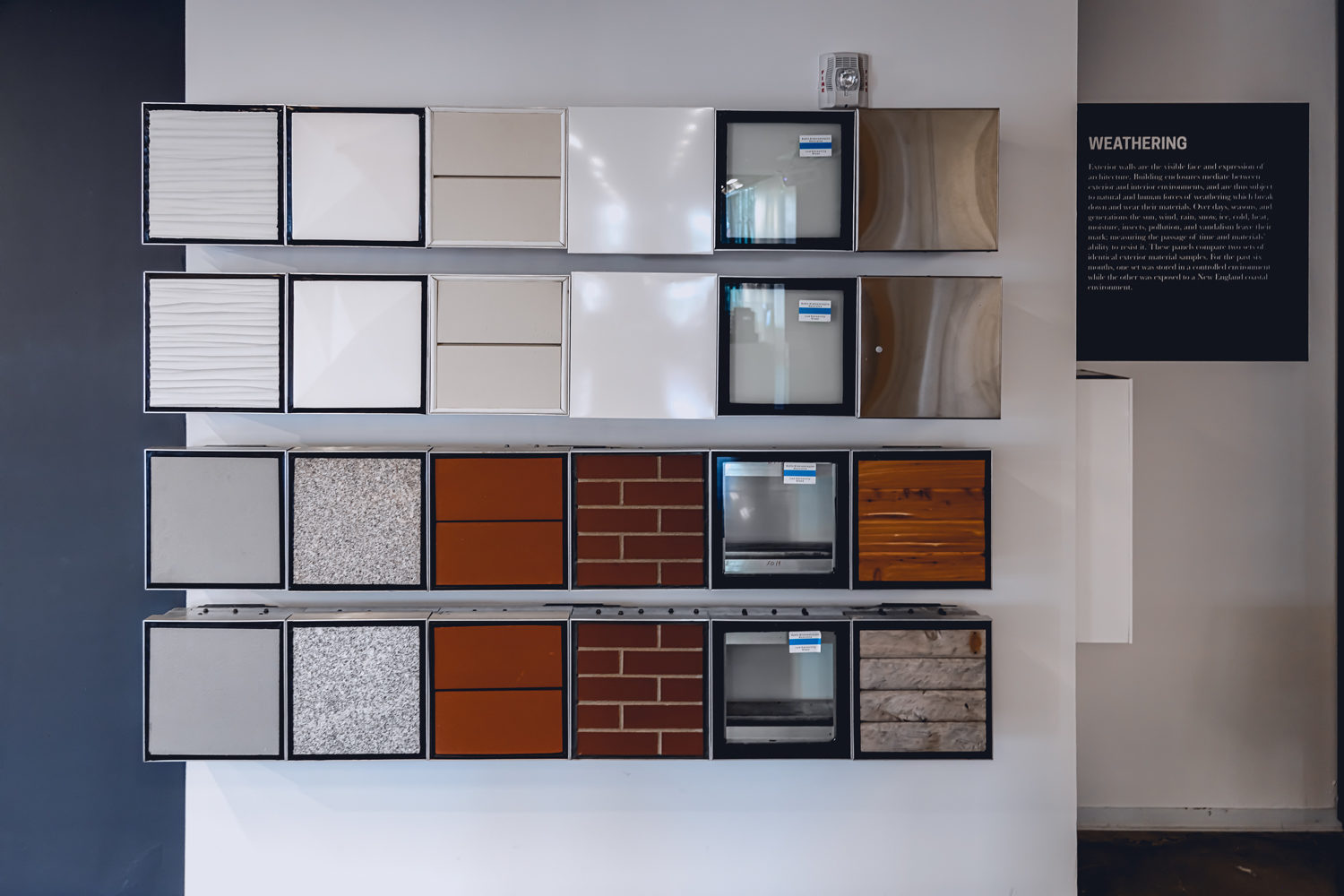Material Cultures
Beyond mere shelter, the material manifestation of buildings creates sensory experiences of light, temperature, smell, texture, and sound which accumulate in our memory.
Similarly, architectural qualities of buildings like scale, proportion, sequence, and surprise reflect and record the collective values and ideals of the culture that produced them. Material cultures explores these reciprocal relationships between people and buildings.
Material Cultures describes the material and human qualities of the four precedents that inspire our devotion to them. Through design, architects shape materials into buildings, and those materials engender unique places, sculpt human experiences, and generate lasting cultural value. Even buildings of ephemeral materials become durable if people consider them worth keeping.

Thermal Table
Move the slider to see the thermal output within the concrete table.
Charred Wood Panel
Peter Wiederspahn AIA explains the charred wood exterior siding of the Wood Innovation and Design Centre.

Learn more about each of the buildings that represent each building material in Building Biographies.
